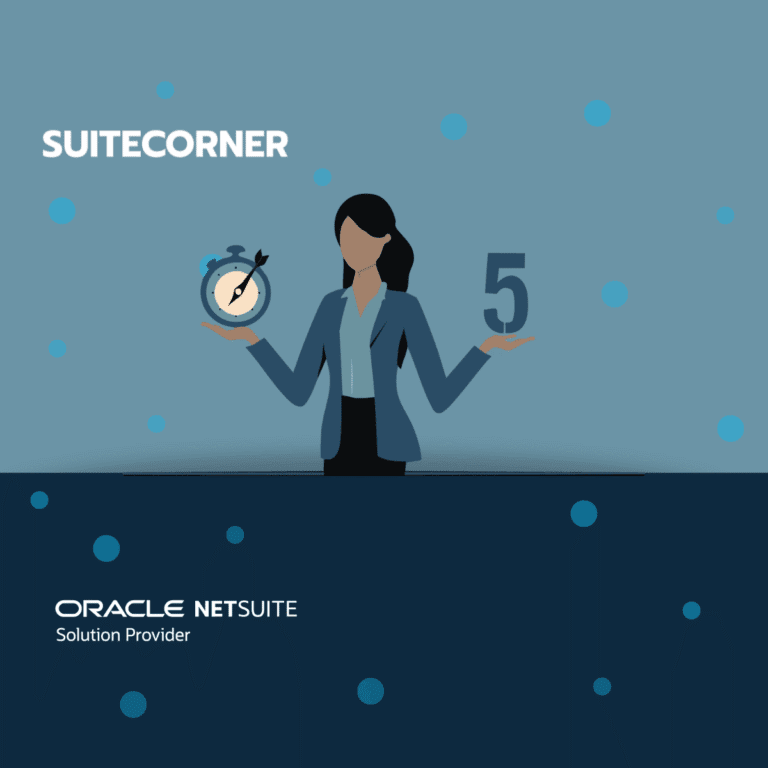Contract Management in CRM Accelerate & Project Accelerate for NetSuite
Agreements / Contracts in NetSuite
This post focuses on the contracts and agreements that need to be established with your customers. It discusses how you can manage the entire contract process in NetSuite, including digital signing. Regardless of what you sell, having a signed contract is often necessary, and as a supplier, you need to ensure that you comply with the terms of the agreements. Ensuring that prices are correct or discounts are applied correctly can sometimes be time-consuming unless the system ensures this for you.
In solutions such as Project Accelerate for NetSuite, there is system support that automatically sets up projects based on the contract. The project that is set up automatically includes all settings, ensuring that project deliveries and project billing comply with the agreements made.
Logging into NetSuite
When logging into NetSuite, users are greeted with a dashboard where the most important functions are gathered. A reminder function at the top left of the dashboard provides quick information about contracts expiring in the next quarter. You may have contracts that need to be extended, and the system helps you identify which contracts are affected. Entering a contract can be done by sales reps or other administrative staff. You decide through role management in NetSuite who should have access to contract functions.
Boards for NetSuite
Get an overview of your contracts with Boards for NetSuite by SuiteCorner (kanban). Each card on the board represents a contract. All contracts are divided into different columns depending on when they expire. The first column shows all contracts without a fixed end date. The second and third columns show, for example, all contracts expiring within 60 and 30 days. Contracts expiring soon may need attention and extension. It’s useful to quickly get a visual overview of all contracts on the boards. From each card, you can open the contract or directly open the customer card. Boards for NetSuite is a general app, meaning that Boards can be used in a variety of areas such as CRM, Support, Service, Projects, etc. Here you can read more about Boards for NetSuite.
Language
All solutions we deliver with Oracle NetSuite can run in +20 different languages! Different users can have different languages inside the system. The images below are in English, but it’s equally possible to fully operate in other languages.
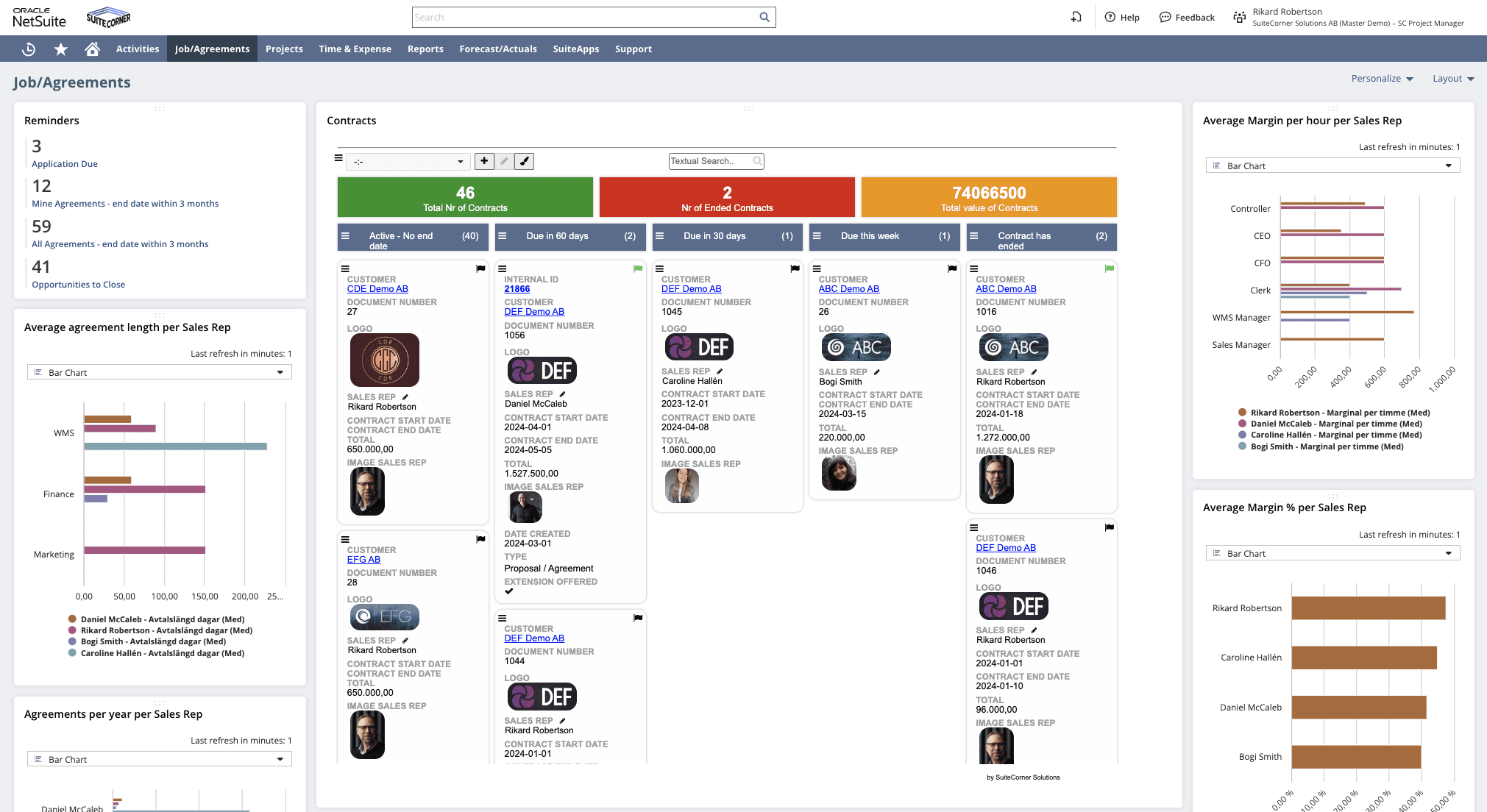
If you prefer to list all contracts in a regular list, that’s perfectly fine. The contract list displayed below lists all contracts in the system. The list can be easily filtered and sorted in a similar way to an Excel sheet. Therefore, it’s very easy to find different types of contracts within the organization. Key metrics and graphs on the dashboard also provide a visual overview of the profitability of different contracts and salespeople.
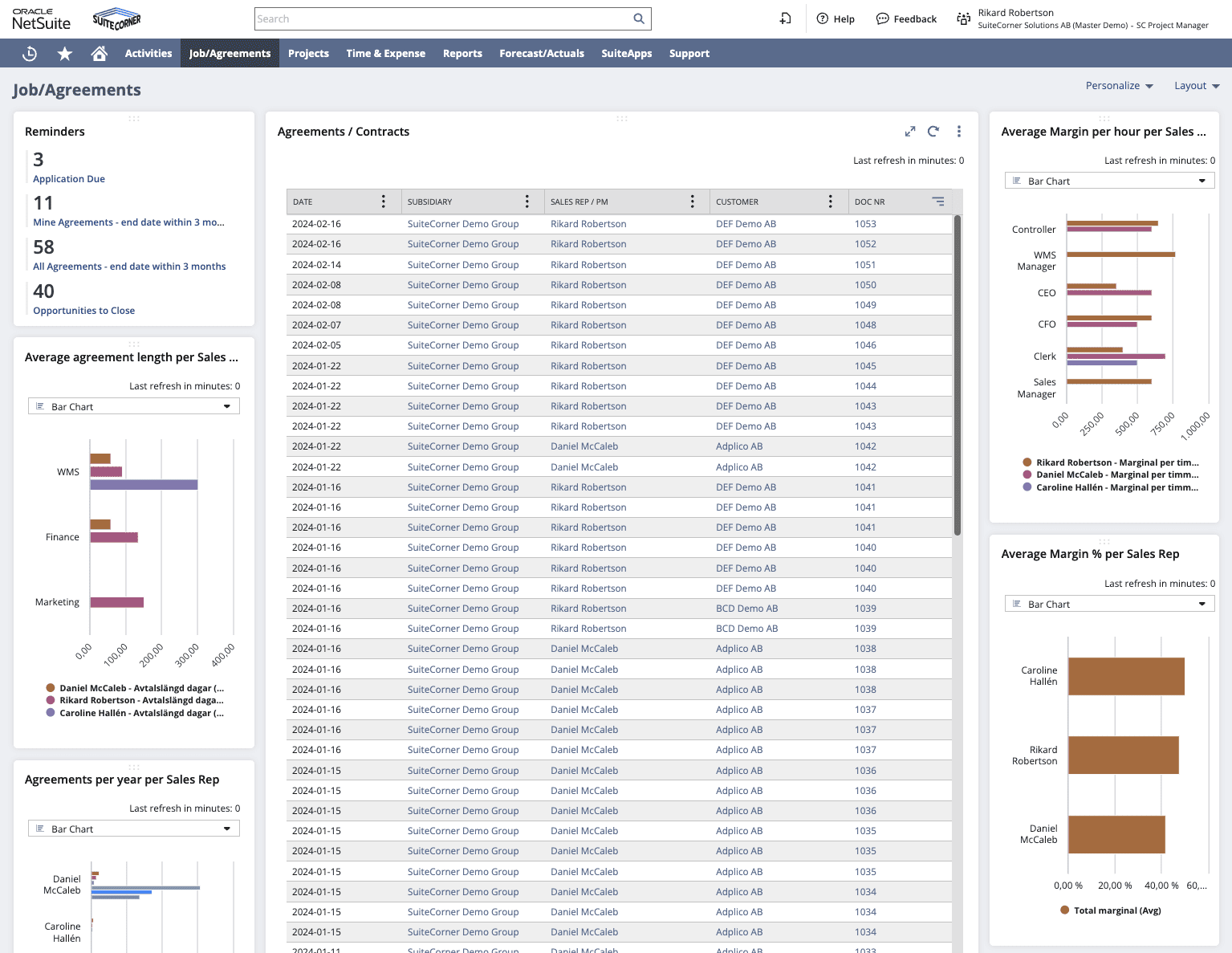
The Contract
The form used when registering a new contract can be easily modified. Fields and functions that you don’t use can be turned off, and any new fields needed for your business can be added. The contract function in NetSuite is based in the standard system’s quoting function, which allows even pending contracts to be part of your pipeline managed in CRM Accelerate for NetSuite.
The status field also indicates the probability of the deal/contract. When the status is set to “Contract signed,” the probability automatically becomes 100%. The probability feature allows you to keep track of forecasts and also provides a pipeline of contracts. The value of contracts can also be measured in weighted values depending on probability. The contract stores both weighted and calculated total values.
All fields located on the transaction header or lines can be part of the contract document generated from NetSuite.
In the example below, it’s a service being sold, but there are no limitations on what you include in the contract. It could be products, services, or a combination of both.
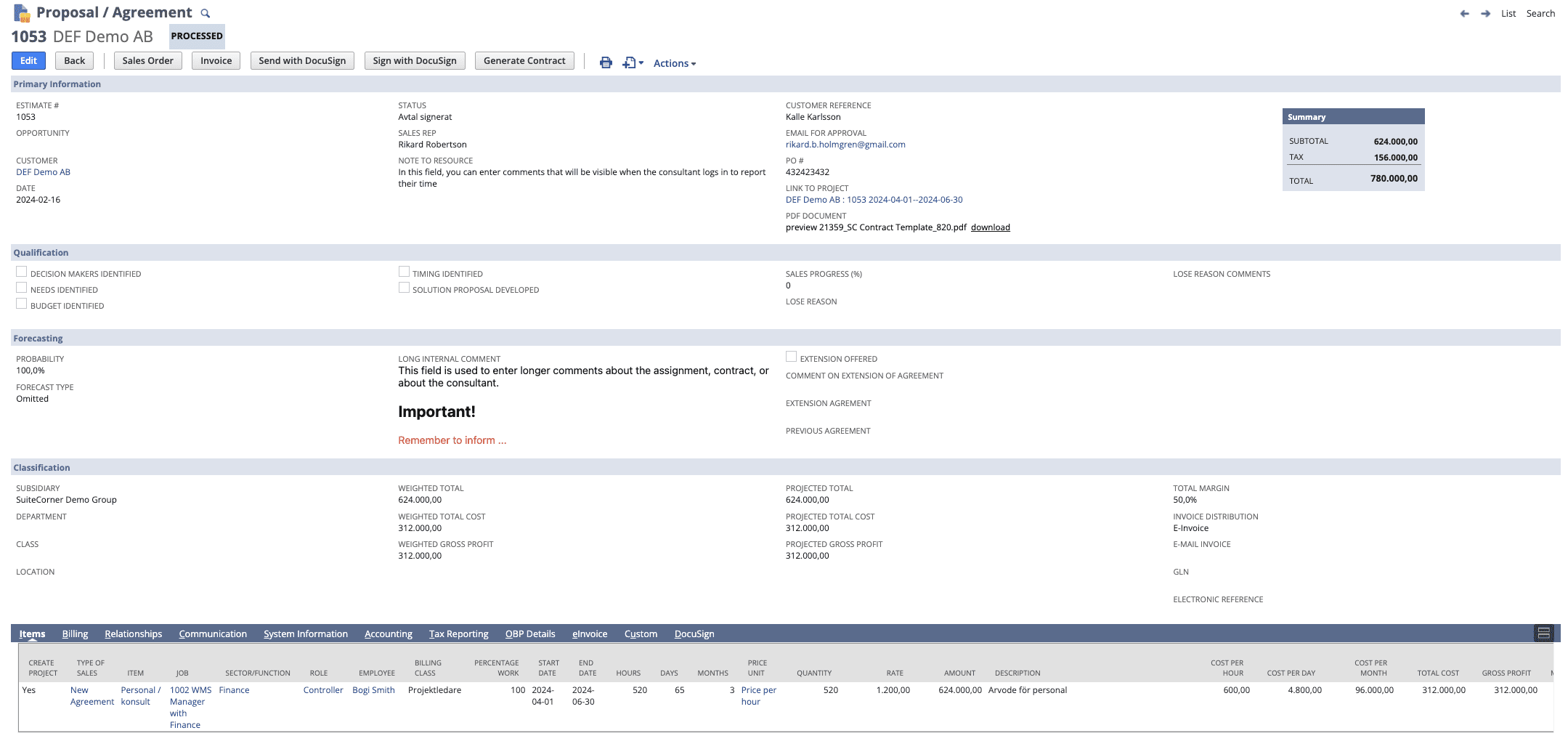
Contract Lines
On the contract lines, you will find all essential information about the products, services, resources, tasks, scope, start and end dates, etc. The system also keeps track of calculated costs, making it easy to determine the total profitability of the contract. During the implementation of this solution, we help ensure that the contract form’s header and lines support your specific business, whether you’re selling products or services. If you need different contract forms for different areas of your business, it’s not a problem to manage that in NetSuite.
All calculations on the contract are automatically computed, making it very user-friendly to enter the contract.
SuiteProject
If you use NetSuite for project management, there are now unique opportunities. When the contract reaches the “Contract signed” status, an opportunity to create a Project directly from the contract is also opened. The system then takes all the information from the contract and automatically creates a fully finished project. In the project, all deliveries of hours, expenses, and other fees occur. In other blog posts, the entire project management is described. If you want to read more about how projects are set up, you can do so here.
Contracts
Often, the contract needs to be signed by both the supplier (you) and your customer. Sometimes parts need to be signed by subcontractors. On the contract, there is a button called “Create contract.” The system then compiles a PDF document that takes information from the contract and combines it with ongoing contract text that you have defined in advance. With the click of a button, the system produces the complete contract. We also help during the implementation project of the contract function to put together the contract document to meet your needs and your graphical profile. With all solutions delivered by SuiteCorner, a unique add-on called Reporter for NetSuite is included. With Reporter for NetSuite, we can create all imaginable print documents within all areas of NetSuite. If you are interested in reading more about Reporter for NetSuite, you can do so here.
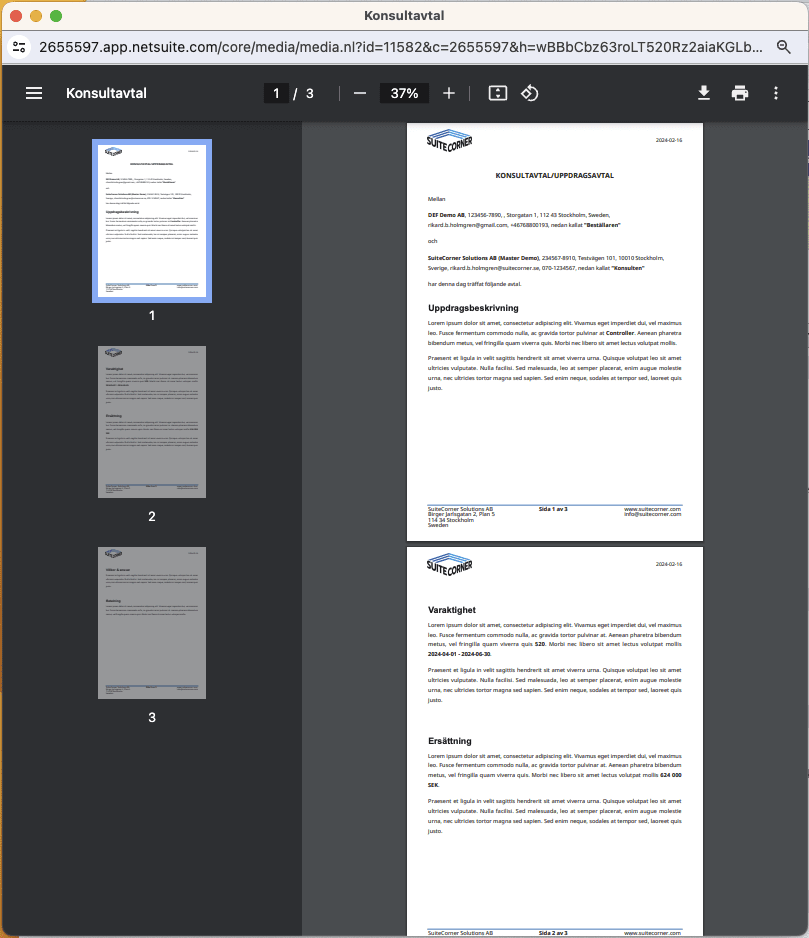
Digital Signing
NetSuite has had a ready-made integration with Docusign for electronic signing for many years. Thousands of customers worldwide use this solution, and we have also successfully used it in Sweden for many years. A few years ago, Docusign had 90% of the total global market share for electronic signing. With industry solutions like CRM Accelerate or Project Accelerate for NetSuite, we can ensure that Docusign is installed and can be used. As a customer, you need to sign an agreement with Docusign to use their signing service. Price-wise, Docusign performs very well compared to many other smaller signing services that have flooded the market in recent years.
With the click of a button on the contract, the digital signing flow in Docusign is initiated.
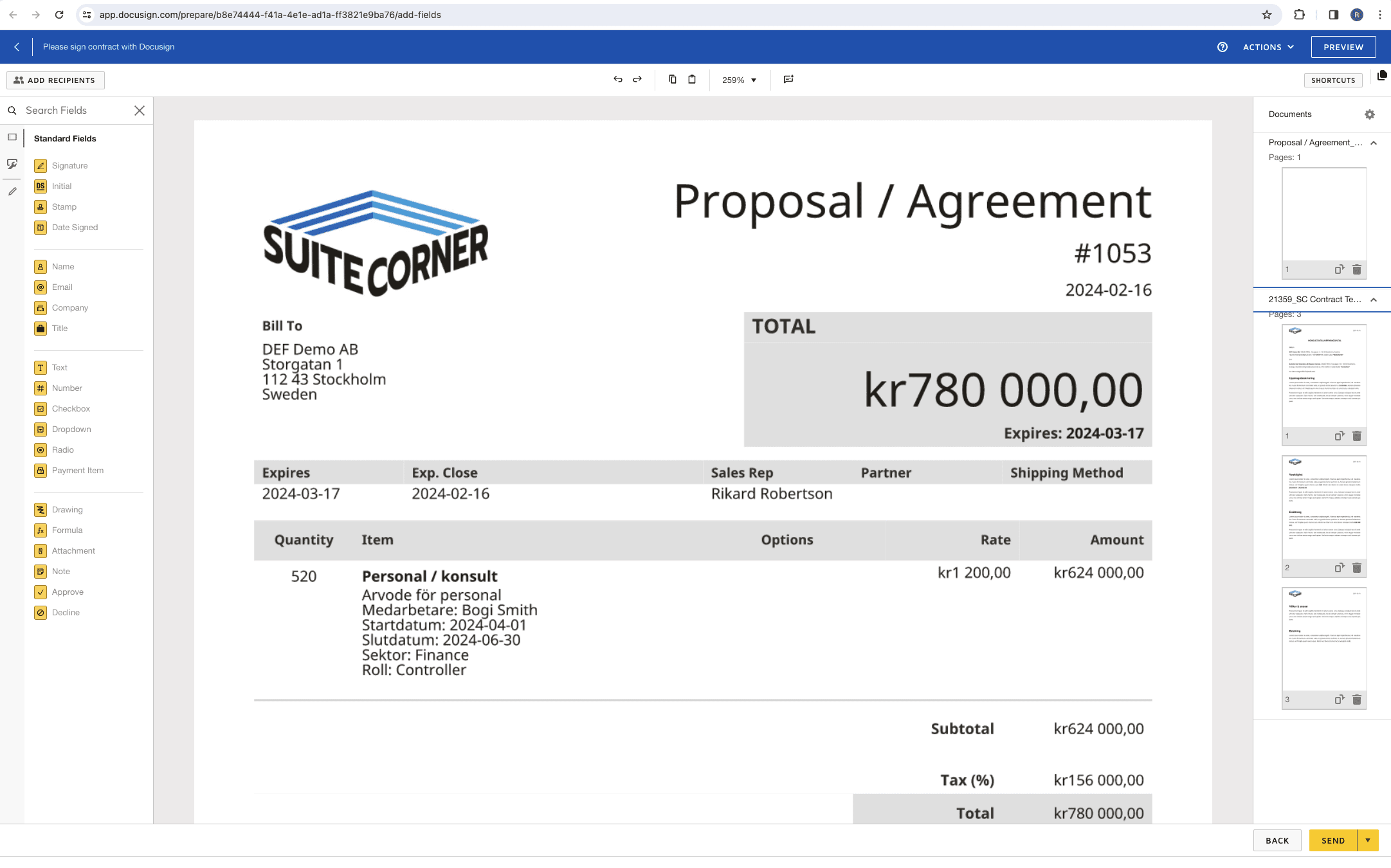
The first page is a summary of the total costs of the contract. Naturally, all printouts are customized to follow your brand identity, including logos, etc.
The digital signing flow is also linked to the contract generated in previous steps.
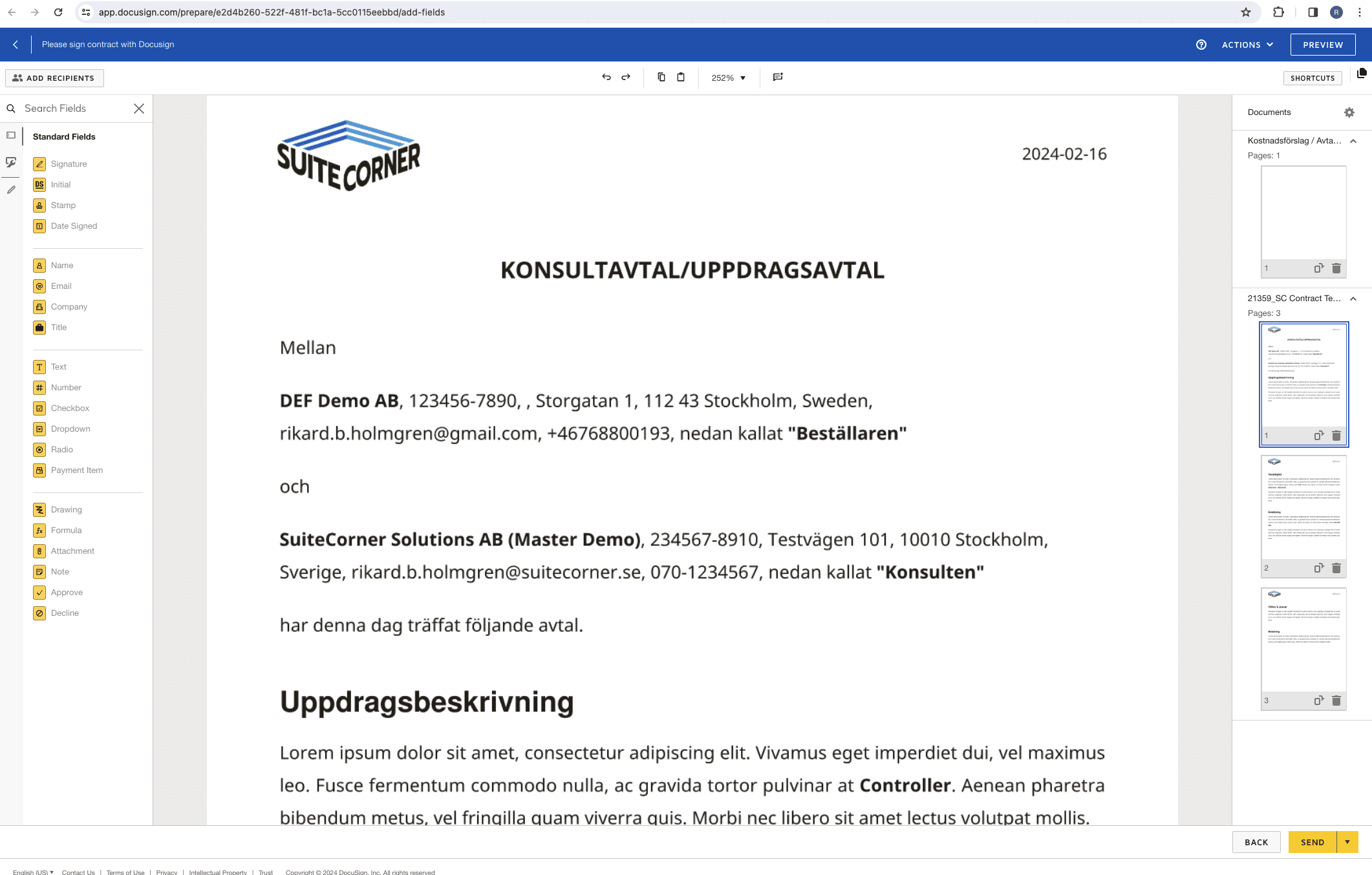
The dispatch to recipients occurs securely and robustly through Docusign.
In NetSuite, you can then track the signing process directly on the contract. Within the contract, there is a subtab called “Docusign.” Here, the activities related to the signing process are listed.

Thanks to well-thought-out processes, you get a very smooth contract management directly in NetSuite. The digital signing component also ensures a completely paperless existence. The fact that the contract is also linked to the sales order or project module ensures that customers are invoiced with the correct rates and that you comply with the agreed contract terms.
Here you can read previous blog posts about CRM, Projects, or other solutions in NetSuite.
Regards, Rikard Burman Holmgren CEO

